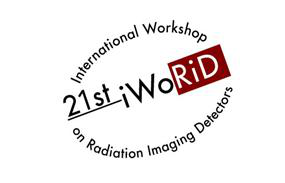Speaker
Description
Abstract: Medipix (2010 - 2012) and Timepix (from 2013) pixel detector networks installed in ATLAS have proven valuable for the characterization of the radiation fields, determination of the induced radioactivity and dose rates at different places in ATLAS, as well as the measurement of luminosity [1][2]. In January 2018, four hybrid pixel detectors of Timepix3 technology (with 500 µm thick silicon layers, 256 x 256 pixels, 55 µm pixel pitch) arranged in 2-layer stacks were added to the ATLAS-TPX network [3]. One layer of the device closer to the interaction point (X = -3580 mm, Z = 970 mm, Z = 2830 mm) was equipped with neutron converters for detection of thermal ($^{6}$LiF) and fast neutrons (low density polyethylene) [3].
In this contribution, we present data analysis methods used for the noisy pixel identification and removal as a crucial first step of cleaning the data set for luminosity analysis and present a study of the thermal neutron fluxes measured with the Timepix3 device.
Data are taken in 3-hour long runs. Noisy pixel identification was done separately for each run. On average 0.1 % of pixels became corrupted within one run. After resetting the matrix configuration, pixels identified as noisy were fully recovered (soft errors). It is shown, how the noisy pixel appearance depends on delivered luminosity and how noisy pixel removal increases the precision and stability of the luminosity determination through counting individual particle tracks.
The thermal neutron fluxes were determined through the $^{6}$Li(n,α)$^{3}$H-reaction (940 barns, detection efficiency ~1 %). Measured thermal neutron fluxes are given as a function of luminosity (see the attached figure). The number of thermal neutrons created per unit luminosity was measured to be 1029.64 ± 0.14 cm$^{-2}$ / nb$^{-1}$. Similar to the cluster rate, the measured thermal neutron fluxes can be used to determine the ATLAS luminosity. Since the thermal neutron signature allows for reliable separation of neutrons from gamma and x-ray interactions, luminosity measurements using thermal neutron detection are less affected by systematic effects such as the activation of surrounding material.
Figure: Scatter plot of the thermal neutron fluxes as a function of luminosity. Each point corresponds to a single ATLAS fill within the time period from April 27 to June 8, 2019.
References:
[1] ATLAS collaboration, Analysis of the Radiation Field in ATLAS Using 2008-2011 Data from the ATLAS-MPX Network, ATL-GEN-PUB-2013-001 (2013).
[2] A. Sopczak et al., 2018 Precision measurements of induced radioactivity and absolute luminosity determination with TPX detectors in LHC proton-proton collisions at 13 TeV, IEEE Trans. Nucl. Sci. 65, 1371.
[3] P. Burian et al 2018 JINST 13 C11024.




